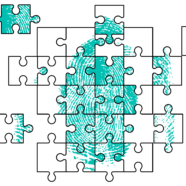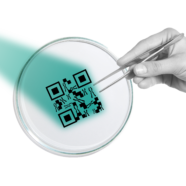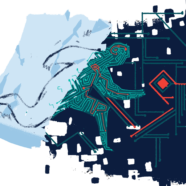- #all
- #banking
- #biometrics
- #business
- #culture
- #digital identity
- #elections
- #ethics
- #facial recognition
- #fingerprint recognition
- #government
- #iris recognition
- #NIST
- #onboarding
- #online elections
- #technology
- #trust
- #UX
- #voice recognition

The magic of synthetic data: How nonexistent fingerprints help identify real criminals
To train a viable AI model, you need data. Lots of it. But what do you do if there just isn't enough? Simple: you make some up. Or, to put it in fancier terms, you “generate synthetic data”.

“Proving guilt requires more than a fingerprint match,” says the director of the Institute of Forensic Science
Biometric fingerprint identification has helped forensic experts in thousands of investigations. Yet, the fingerprint itself is just one piece of evidence evaluated by the court.

From measuring head length to advanced facial biometrics: The history of criminal identification
How did the police catch villains back in the old days, before the dawn of computers, fancy tech gadgets and automated biometric identification systems?

Entering the era of DNA IDs: Will DNA become an integral part of our personal identity documents?
Since 1986, DNA has revolutionised criminal investigations, arresting killers and clearing the innocent. However, even though DNA fingerprints has helped to identify criminals, they do not contain any real personal information, such as race or height. For this reason, experts consider using them as DNA IDs in government databases for registration, verification, and access control.

AI researcher Martin Tamajka: “If we are to trust AI in courtrooms, it needs to justify its decisions.”
AI is transforming jobs across a wide range of industries. However, there are still concerns about using it extensively when people's lives or futures are at risk, such as in medicine or law. In these cases, it's not enough for AI to just produce an answer – it also needs to be able to explain how it came up with that answer.

From paper to digital: Modernising criminal records with biometrics
Guinea is now dedicated to modernising and digitising its police records. This involves the integration of biometrics into the criminal identification process.

TV vs reality: The investigative work crime shows fail to reflect
If you want to become a criminal investigator or wonder what a real crime scene looks like, let this article be your reality check.

We collect and analyse fingerprints to better understand the needs of law enforcement
Inside the Innovatrics forensic lab, you will find a mix of high-tech fingerprint gadgets and traditional brushes and powders for lifting fingerprints.

Como um banco melhorou seu Onboarding Digital com dois recursos simples
O banco 365 é um banco da nova era que deseja revolucionar a maneira como as pessoas na Eslováquia lidam com suas finanças. Eles querem que seus clientes tenham sempre todos os serviços bancários disponíveis na ponta dos dedos, não importa onde estejam.

How 365 Bank Improved Online Onboarding with Two Simple Features
365 bank is a new-age bank that wants to revolutionise the way people in Slovakia approach their finances. They want their customers to always have all banking services available at their fingertips, no matter where they were.








